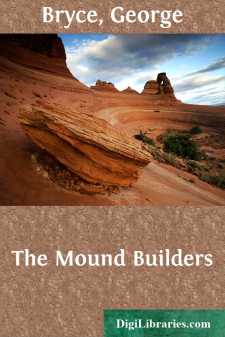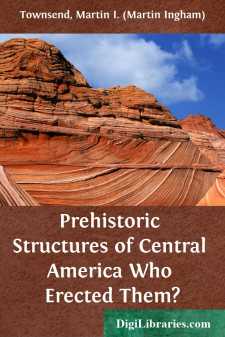Religion
- Agnosticism 2
- Antiquities & Archaeology
- Atheism 13
- Biblical Criticism & Interpretation 16
- Biblical Meditations 3
- Biblical Reference 1
- Biblical Studies 11
- Buddhism 8
- Christian Church 52
- Christian Education 5
- Christian Life 26
- Christianity 61
- Cults 2
- Devotional 6
- Eastern 2
- Education 4
- Eschatology 1
- Ethics 3
- General 60
- Gnosticism 1
- Hinduism 15
- History 28
- Holidays 10
- Inspirational 1
- Islam 8
- Judaism 3
- Leadership 1
- Meditations 3
- Monasticism 1
- Mysticism 11
- Philosophy 4
- Prayer 26
- Prayerbooks 5
- Religion & Science 12
- Sermons 54
- Spirituality 53
- Theism 2
- Theology 17
- Theosophy 15
Antiquities & Archaeology Books
Sort by:
by:
James Baikie
Page vii PREFACE The object aimed at in the following pages has been to offer to the general reader a plain account of the wonderful investigations which have revolutionized all ideas as to the antiquity and the level of the earliest European culture, and to endeavour to make intelligible the bearing and significance of the results of these investigations. In the hope that the extraordinary...
more...
CHAPTER I THE ROMANIZATION OF THE EMPIRE Historians seldom praise the Roman Empire. They regard it as a period of death and despotism, from which political freedom and creative genius and the energies of the speculative intellect were all alike excluded. There is, unquestionably, much truth in this judgement. The world of the Empire was indeed, as Mommsen has called it, an old world. Behind it lay the...
more...
by:
George Bryce
The Mound Builders. A Lost Race Described by Dr. Bryce, President of the Historical Society. SEASON 1884-85 Ours are the only mounds making up a distinct mound-region on Canadian soil. This comes to us as a part of the large inheritance which we who have migrated to Manitoba receive. No longer cribbed, cabined, and confined, we have in this our "greater Canada" a far wider range of study than...
more...
by:
Charles E. Davis
ON THE EXCAVATIONS OF THE ROMAN BATHS AT BATH. Re-printed from the Transactions of the Bristol and Gloucestershire Archæological Society. Vol. VIII., part I. Leland, on his visit to Bath in the year 1530, with tolerable fulness describes the baths, and after completing his description of the King's Bath goes on to say "Ther goith a sluse out of this Bath and servid in Tymes past with Water...
more...
by:
Cosmos Mindeleff
INTRODUCTION HISTORY AND LITERATURE Although Canyon de Chelly is one of the best cliff-ruin regions of the United States, it is not easily accessible and is practically unknown. At the time of the conquest of this country by the "Army of the West" in 1846, and of the rush to California in 1849, vague rumors were current of wonderful "cities" built in the cliffs, but the position of the...
more...
INTRODUCTION. The feelings that lead some men to investigate remains of antiquity and search into their origin, dates and purposes, are similar to those actuating lofty minds, when not satisfied with the surface of things, they inquire into the source and origin of every thing accessible to human ken, and scrutinize or every tangible object. Such feelings lead us to trace events and principles, to...
more...
PREFACE The contents of the present volume are of much the same character as those of its predecessor, 'Roman Britain in 1913'. The first section gives a retrospect of the chief finds made in 1914, so far as they are known to me. The second section is a more detailed and technical survey of the inscriptions found in Britain during that year. The third and longest section is a summary, with...
more...
THE MATERIAL OF THE MANUSCRIPTS. The three manuscripts which we possess of the ancient Maya peoples of Central America, the Dresden (Dr.), the Madrid (Tro.-Cort.) and the Paris (Per.) manuscripts, all contain a series of pictorial representations of human figures, which, beyond question, should be regarded as figures of gods. Together with these are a number of animal figures, some with human bodies,...
more...
INTRODUCTION. It was not a long period after 1492, when the great Italian navigator with his Spanish crew made their first discoveries upon the central portion of America, that the Europeans, who had followed the footsteps of Christopher Columbus, began to fall in with structures of great magnitude and architectural beauty scattered widely throughout Mexico, Guatemala and Yucatan, &c.; and when the...
more...
THE TRANSFORMATION OF ROME FROM A PAGAN INTO ACHRISTIAN CITY. The early adoption of Christianity not confined to the poorer classes.—Instances of Roman nobles who were Christians.—The family of the Acilii Glabriones.—Manius Acilius the consul.—Put to death because of his religion.—Description of his tomb, recently discovered.—Other Christian patricians.—How was it possible for men in...
more...











